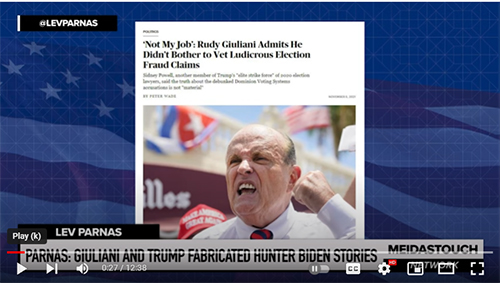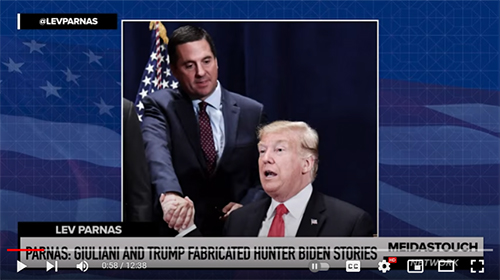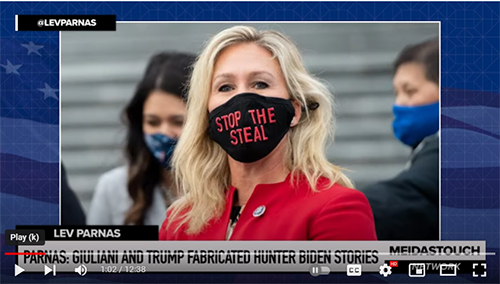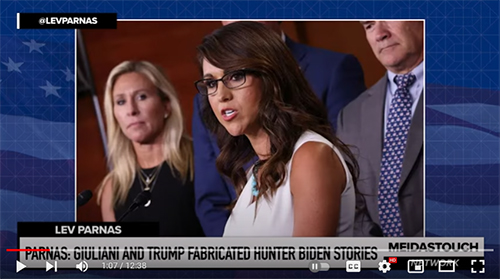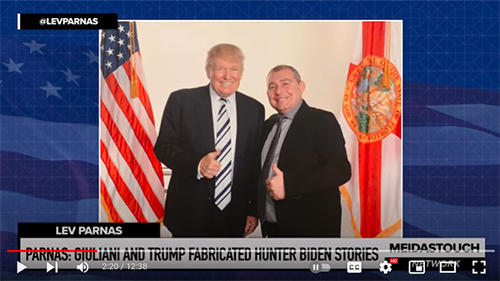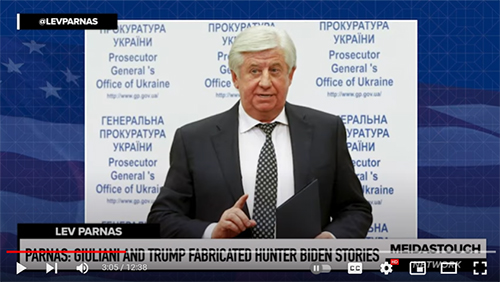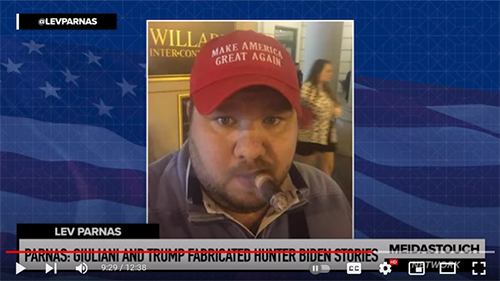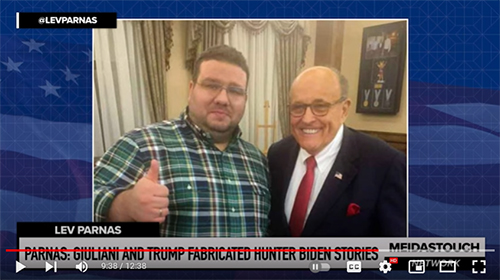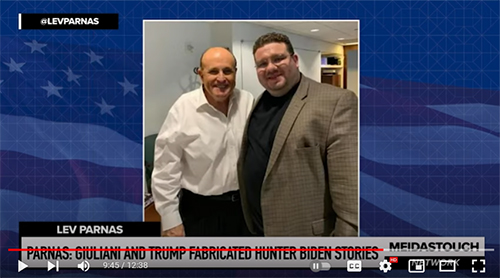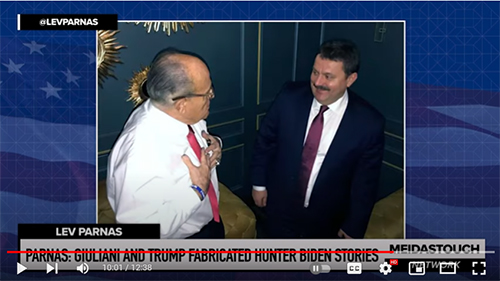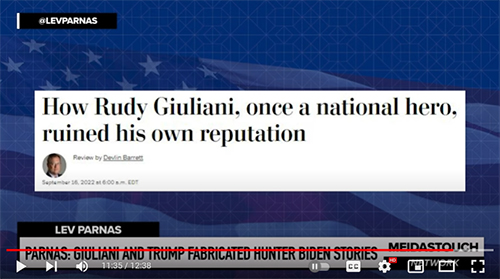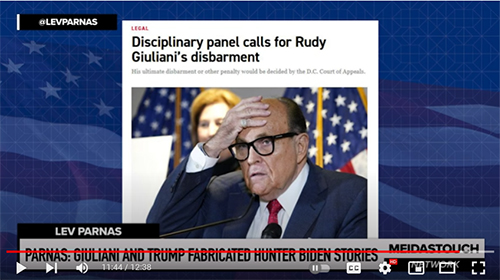Memorandum Opinion Denying Defendant's Rule 59 Motion
E. Jean Carroll vs. Donald Trump
Case No. 22-cv-10016 (LAK)
by Judge Lewis A. Kaplan
July 19, 2023
https://storage.courtlistener.com/recap ... 12.0_1.pdf
UNITED STATES DISTRICT COURT
SOUTHERN DISTRICT OF NEW YORK
E. JEAN CARROLL,
Plaintiff,
-against-
DONALD J. TRUMP,
Defendant.
22-cv-10016 (LAK)
MEMORANDUM OPINION DENYING DEFENDANT’S RULE 59 MOTION
Appearances:
Roberta Kaplan
Joshua Matz
Shawn Crowley
Matthew Craig
Trevor Morrison
Michael Ferrara
KAPLAN HECKER & FINK LLP
Attorneys for Plaintiff
Joseph Tacopina
Matthew G. DeOreo
Chad Derek Seigel
TACOPINA SEIGEL & DEOREO, P.C.
Alina Habba
Michael T. Madaio
HABBA MADAIO & ASSOCIATES LLP
Attorneys for Defendant
LEWIS A. KAPLAN, District Judge.
In 2019, E. Jean Carroll first publicly claimed that businessman Donald J. Trump, as he then was, sexually assaulted (“raped”) her in the mid-1990s. Mr. Trump responded almost immediately by charging that Ms. Carroll’s claim was entirely false, that no such thing ever had happened, and that Ms. Carroll falsely accused Mr. Trump for ulterior and improper purposes. He repeated that contention in 2022 and yet again more recently. Ms. Carroll consequently sued Mr. Trump twice.
Ms. Carroll’s first lawsuit (“Carroll I”), commenced in 2019, alleges that Mr. Trump’s 2019 statements were defamatory. While that case was delayed for years for reasons that need not be recapitulated here, it now is scheduled for trial in January 2024.
This, the second case (“Carroll II”), also contains a defamation claim, albeit one based on Mr. Trump’s comparable 2022 statement. But Carroll II made an additional claim – one for damages for the sexual assault. That claim could not have been made in 2019 because the statute of limitations almost doubtless would have expired long before. But the claim was made possible in 2022 by the enactment that year of New York’s Adult Survivors Act (the “ASA”), which temporarily revived the ability of persons who were sexually assaulted as adults to sue their alleged assaulters despite the fact that an earlier statute of limitations had run out.
This case, Carroll II, was tried in April and May 2023. Ms. Carroll contended that Mr. Trump had assaulted her in a dressing room at a New York department store where, among other things, he forcibly penetrated her vagina with his fingers and his penis. She testified in person for most of three days and was cross-examined intensively. Her sexual assault claim was corroborated by two “outcry” witnesses in whom Ms. Carroll had confided shortly after the attack, and was supported by six other fact witnesses. Mr. Trump’s defense – based exclusively on an attempt to discredit Ms. Carroll and her other witnesses – in substance was that no assault ever had occurred, that he did not even know Ms. Carroll, and that her accusations were a “Hoax.” Mr. Trump, however, did not testify in person or even attend the trial despite ample opportunity to do so.
The jury’s unanimous verdict in Carroll II was almost entirely in favor of Ms. Carroll. The only point on which Ms. Carroll did not prevail was whether she had proved that Mr. Trump had “raped” her within the narrow, technical meaning of a particular section of the New York Penal Law – a section that provides that the label “rape” as used in criminal prosecutions in New York applies only to vaginal penetration by a penis. Forcible, unconsented-to penetration of the vagina or of other bodily orifices by fingers, other body parts, or other articles or materials is not called “rape” under the New York Penal Law. It instead is labeled “sexual abuse.”1
As is shown in the following notes, the definition of rape in the New York Penal Law is far narrower than the meaning of “rape” in common modern parlance, its definition in some dictionaries,2 in some federal and state criminal statutes,3 and elsewhere.4 The finding that Ms. Carroll failed to prove that she was “raped” within the meaning of the New York Penal Law does not mean that she failed to prove that Mr. Trump “raped” her as many people commonly understand the word “rape.” Indeed, as the evidence at trial recounted below makes clear, the jury found that Mr. Trump in fact did exactly that.
So why does this matter? It matters because Mr. Trump now contends that the jury’s $2 million compensatory damages award for Ms. Carroll’s sexual assault claim was excessive because the jury concluded that he had not “raped” Ms. Carroll.5 Its verdict, he says, could have been based upon no more than “groping of [Ms. Carroll’s] breasts through clothing or similar conduct, which is a far cry from rape.”6 And while Mr. Trump is right that a $2 million award for such groping alone could well be regarded as excessive, that undermines rather than supports his argument. His argument is entirely unpersuasive.
This jury did not award Ms. Carroll more than $2 million for groping her breasts through her clothing, wrongful as that might have been. There was no evidence at all of such behavior. Instead, the proof convincingly established, and the jury implicitly found, that Mr. Trump deliberately and forcibly penetrated Ms. Carroll’s vagina with his fingers, causing immediate pain and long lasting emotional and psychological harm. Mr. Trump’s argument therefore ignores the bulk of the evidence at trial, misinterprets the jury’s verdict, and mistakenly focuses on the New York Penal Law definition of “rape” to the exclusion of the meaning of that word as it often is used in everyday life and of the evidence of what actually occurred between Ms. Carroll and Mr. Trump.
There is no basis for disturbing the jury’s sexual assault damages. And Mr. Trump’s arguments with respect to the defamation damages are no stronger.
Facts
The Evidence at Trial
Ms. Carroll’s case in chief constituted all of the evidence at trial. Mr. Trump neither testified nor called any witnesses. Apart from portions of his deposition that came in on Ms. Carroll’s case, there was no defense evidence at all. The defense consisted entirely of (1) an attempt to discredit Ms. Carroll’s proof on cross-examination, and (2) Mr. Trump’s testimony during his deposition that Ms. Carroll’s account of the alleged events at the department store was a hoax.
Sexual Battery
Liability
The principal evidence as to Mr. Trump’s liability for the sexual assault was the testimony of Ms. Carroll, of the two “outcry” witnesses and of two other women who claimed to have been sexually assaulted by Mr. Trump, the so-called Access Hollywood video, and Mr. Trump’s remarkable comments about that video during his deposition.
Ms. Carroll
In her first public accusation of sexual assault – “rape” – against Mr. Trump, which was published in June 2019 as an excerpt of her then-forthcoming book, Ms. Carroll described the assault in relevant part as follows:
“The moment the dressing-room door [(at Bergdorf Goodman, a department store in New York)] is closed, he lunges at me, pushes me against the wall, hitting my head quite badly, and puts his mouth against my lips. I am so shocked I shove him back and start laughing again. He seizes both my arms and pushes me up against the wall a second time, and, as I become aware of how large he is, he holds me against the wall with his shoulder and jams his hand under my coat dress and pulls down my tights. . . . The next moment, still wearing correct business attire, shirt, tie, suit jacket, overcoat, he opens the overcoat, unzips his pants, and, forcing his fingers around my private area, thrusts his penis halfway — or completely, I’m not certain — inside me. It turns into a colossal struggle.7
At trial, Ms. Carroll testified:
• “He [(Mr. Trump)] immediately shut the [(dressing room)] door and shoved me up against the wall and shoved me so hard my head banged.”
• “I pushed him back, and he thrust me back against the wall again, banging my head again.”
• “He put his shoulder against me and hold [sic] me against the wall.”
• “I remember him being -- he was very large, and his whole weight came against my chest and held me up there, and he leaned down and pulled down my tights.”
• “I was pushing him back. . . . I pushed him back. This arm was pinned down. This arm had my purse. Trying to get him back.”
• “His head was beside mine breathing. First, he put his mouth against me.”
• “[I was] [s]tamping and trying to wiggle out from under him. But he had pulled down my tights and his hand went -- his fingers went into my vagina, which was extremely painful, extremely painful. It was a horrible feeling because he curved, he put his hand inside of me and curved his finger. As I’m sitting here today, I can still feel it.”
• “Then he inserted his penis.”
• “He was against me, his whole shoulder -- I couldn’t see anything. I couldn’t see anything that was happening. But I could certainly feel it. I could certainly feel that pain in the finger jamming up.”8
After a day and a half of direct testimony, Ms. Carroll was subjected to a lengthy cross examination during which she testified:
“Q. It’s your story that at some point you felt his penis inside of you?
A. Yes.
Q. But before that, it’s your sworn testimony that you felt his fingers, what you said was rummaging around your vagina?
A. It’s an unforgettable feeling.
Q. Now, when you say rummaging around your vagina, that’s different than inserting a finger inside your vagina.
A. At first he rummaged around and then he put his finger inside me.
Q. In your book you wrote that he was forcing his fingers around my private area and then thrust his penis halfway completely, I’m not certain, inside me. Is that accurate?
A. Yes.”9
The Outcry Witnesses
Ms. Carroll confided in two of her friends, Lisa Birnbach and Carol Martin (the “outcry” witnesses), about the attack shortly after it occurred. Almost immediately after Ms. Carroll escaped from Mr. Trump and exited the store, she called Ms. Birnbach. Ms. Carroll testified that during that call:
“A. I said, you are not going to believe what just happened. I just needed to tell her. I said I met Donald Trump in Bergdorf’s. We went lingerie shopping and I was so dumb I walked in a dressing room and he pulled down my tights.”
. . .
Q. What else did you say?
A. Well, she asked me, she said, after she heard he had pulled down my tights, she asked me, did he insert his penis? I said yes. And then Lisa said the words: Probably why I called her. She said he raped you. He raped you, E. Jean. You should go to the police. I said: No way. Then she said: I will go with you.”10
The next day, or the day after that, Ms. Carroll told Ms. Martin about the attack. Ms. Carroll testified:
“I said [(to Ms. Martin)]: Carol, you are not going to believe it. I had a run-in with Donald Trump at Bergdorf’s. She said -- she saw my face. She said: We can’t talk here. We were back behind the studio. She said: Let’s talk tonight at my house.
. . .
I took her through step by step what happened. And Carol is a very unjudgmental, open-hearted friend. But she was -- she gave me the exact -- her concern was very different than Lisa’s. Carol’s concern was, do not go to the police.”11
Both Ms. Birnbach and Ms. Martin testified about their conversations with Ms. Carroll. Ms. Birnbach testified in relevant part:
“Q. What was the first thing that Ms. Carroll said when you picked up the phone?
A. She said, Lisa, you are not going to believe what happened to me.
. . .
Q. What did she say after she said, Lisa, you are not going to believe what just happened?
A. E. Jean said that she had, after work that day, she had gone to Bergdorf’s to look around, and she was on her way out -- and I believe it was a revolving door -- and she said on the other side of the glass from her going in, as she was going out, Donald Trump said to her, Hey, you’re the advice lady. And she said, You’re the real estate guy. And he said, You’re so good at advice, you are so smart, why don’t you help me pick out a present for a friend? So she thought she would, it sounded like a funny thing, this guy, who is famous. And she went back in the store and tried to, in my -- in my memory tried to show him things[.] . . . They went upstairs, eventually finding themselves in the lingerie department, and there was no one behind the counter but there was a little bodysuit --
. . .
Q. What did she say happened after they got to the lingerie department?
A. He said, Why don’t you try this on? And she, continuing sort of the jokey banter that they had, she said, Why don’t you try it on? And then the next thing that happened is they were both in the dressing room and he slammed her against the wall. And then, as she was trying to move, he -- he slammed his whole arm, pinned her against the wall with his arm and shoulders, and with his free hand pulled down her tights. And E. Jean said to me many times, He pulled down my tights. He pulled down my tights. Almost like she couldn’t believe it. She was still processing what had just happened to her. It had just happened to her. He pulled down my tights. And then he penetrated her.
Q. Did she say how he penetrated her?
A. Yes. She said with his penis.
Q. What did you say after Ms. Carroll described this to you?
A. As soon as she said that . . . and I said, I whispered, E. Jean, he raped you. . . . ”12
Two days later, Ms. Martin testified in pertinent part:
“Q. And what did she say -- again, taking this piece by piece, what did she say what happened?
A. She introduced it by saying, You won’t believe what happened to me the other night. As I recall. And I didn’t know what to expect and so, I just turned to her and she said, Trump attacked me.
. . .
Q. Now, Ms. Carroll says to you that Trump attacked me. Do you recall what you said next, if anything?
A. Yeah. I was completely floored. I didn’t quite know what was coming next. She is leaning in to me, and I’m saying, What are you talking about? But the next thing that came to my mind was if she was OK and that’s what I asked her. So I said, Are you OK? Because she seemed -- her affect was, I would say, anxious and excitable, but she could be that way sometimes but that part was different in her affect. But what she was saying didn’t make any sense at first.
Q. And when you asked her was she OK, did she respond?
A. She said -- she probably said I don’t know. She kept telling me what happened, that he attacked me. I think she said ‘pinned me’ is what she said and I still didn’t know what that meant.
Q. So, to the best of your recollection -- I understand it would be crazy if you could remember every word, but what did she tell you that day about what had happened to her at Bergdorf Goodman?
A. Basically, she backtracked. I kept asking her to backtrack. It wasn’t a linear conversation, as you would expect, because it was news, it was I didn’t know what I am hearing here, and she was clearly agitated, anxious. And she said she was at Bergdorf’s the night before -- probably two nights, if I recall -- and that she ran into Mr. Trump going in one of the revolving doors. And she said that they started up a conversation. My sense is that she engaged him, or vice versa, because that's not uncommon for E. Jean. He recognized her, she recognized him.
. . .
Q. And what else did she tell you about what happened once they were inside Bergdorf Goodman?
A. So, she related that they sort of started kibbitzing or talking back and forth, it was apparently friendly, and she said that he was looking for a gift. And so, she engaged him that way suggesting certain things. I don’t remember all of the things. But this must have gone on for a few minutes and then, somehow, they started up the stairs -- escalator, she said.
Q. And did she tell you what happened after they got off the escalator?
A. Yeah. And again, this was disjointed because I would stop and ask her, What do you mean? What do you mean? And she was explaining as she’s going that once they reached a level -- and I don’t know Bergdorf’s that well, but once they reached a level where there was -- there were dressing rooms, and she said at that point that he attacked her. Those were the words that I remember but I still said, What do you mean? You look OK. You look -- and she had been at work so I couldn’t put it together. And she didn't use the word ‘rape,’ that I recall. I have said that before. But she said it was a frenzy. She said, I was fighting. I was fighting. She kept saying that.”13
Other Alleged Survivors
The jury heard also from two other women who allegedly were sexually assaulted by Mr. Trump: Jessica Leeds and Natasha Stoynoff.14 Ms. Leeds claims she was seated beside Mr. Trump on a flight to New York in 1978 or 1979 when he allegedly assaulted her. She testified:
“A. Well, what happened was they served a meal, and it was a very nice meal, as Braniff was -- was -- reputation to do, and it was cleared and we were sitting there when all of a sudden Trump decided to kiss me and grope me.
Q. What led to that? Was there conversation?
A. There was no conversation. It was like out of the blue.
. . .
Q. What did you -- so describe, if you would, what he did exactly.
A. Well, it was like a tussle. He was -- his hands and -- he was trying to kiss me, he was trying to pull me towards him. He was grabbing my breasts, he was -- it’s like he had 40 zillion hands, and it was a tussling match between the two of us. And it was when he started putting his hand up my skirt that that kind of gave me a jolt of strength, and I managed to wiggle out of the seat and I went storming back to my seat in the coach.”15
On cross examination, she testified also:
“Q. And it is your story that after you were done eating, the flight attendant cleared your tray tables and this man suddenly attacked you?
A. Correct.
Q. It is your story this man grabbed you with his hands, tried to kiss you, grabbed your breasts, and pulled you towards him?
A. Correct.
Q. And pulled himself onto you?
A. It’s not -- no, not onto me but he was leaning-in to me, pushing me against the back of the seat.
Q. OK. And then according to you he, at one point, put his hand on your knee?
A. He started putting his hand up my skirt.
Q. OK, on your leg and up your skirt?
A. Correct.”16
Ms. Leeds confirmed that “if the man had just stuck with the upper part of [her] body, [she] might not have gotten that upset” and that “it is only when he eventually started putting his hands up [her] skirt that [she] said I don’t need this[.]”17 On re-direct she explained:
“Q. Why did you find it less upsetting when he had his hands above your skirt than when they went into your skirt, when his hand went into your skirt? A. That’s sort of the demarcations -- I mean, people -- men -- would frequently pat you on the shoulder and grab you or something like that and you just -- it is not serious and you don’t -- you don’t -- but when somebody starts to put their hand up your skirt, you know they’re serious and this is not good.”18
Ms. Stoynoff, then a reporter for a magazine, encountered Mr. Trump in 2005 at Mara- Lago, his residence in Florida, on an assignment to interview him and his wife, Melania. Ms. Stoynoff testified:
“Q. So where did you go with Mr. Trump after he said, I want to show you this room?
A. So we -- I followed him, and we went in through these back doors and down a hall, as I recall it, and turned right into a room.
Q. Who was with you at that point?
A. As I recall, just he and I.
Q. So what happened next?
A. So we -- we walked into a room, and I’m looking in this room, and I went in first and I’m looking around, I’m thinking, wow, really nice room, wonder what he wants to show me, and he -- I hear the door shut behind me. And by the time I turn around, he has his hands on my shoulders and he pushes me against the wall and starts kissing me, holding me against the wall.
Q. Was anyone else in the room at this time?
A. Nobody else.
Q. What did you -- how did you react?
A. I started -- I tried to push him away.
Q. Had you -- had anything been said up until that point when you walked into the room? Did he say anything or did you say anything?
A. No, not that I recall.
. . .
Q. So what -- I think you said you tried to shove him away. What happened?
A. He came toward me again, and I tried to shove him again.
Q. What was he doing sort of -- what was he doing with, let’s say, the rest of his face or body?
A. Well, he was kissing me and, you know, he was against me and just holding my shoulders back.
Q. Did you -- what, if anything, did you say while this was happening?
A. I didn’t say words. I couldn’t. I tried. I mean, I was just flustered and sort of shocked and I -- no words came out of me. I tried, though. I remember just sort of mumbling.
. . .
Q. How long -- do you recall how long that went on for?
A. A few minutes.
Q. How did it end?
A. A butler came into the room.
. . .
Q. How did Mr. Trump react when the butler came in?
A. He stopped doing what he was doing.
Q. Were you able to perceive whether the butler saw what had been happening?
A. I don’t know if he saw, but to my mind, I gave him a kind of a ‘get me out of here’ look, and I felt like he understood.
Q. So what happened, what happened next?
A. The butler led us back to the couch area, and Melania was on her way, and Trump said a few things to me.
Q. What did he say to you?
A. He said, Oh, you know we are going to have an affair, don’t you? You know, don’t forget what -- don’t forget what Marla said, best sex she ever had. We are going to go for steak, we are going to go to Peter Luger’s. We’re going to have an affair.
. . .
Q. . . . Before the butler came into the room, did Mr. Trump do anything to you that suggested he was going to stop on his own?
A. No.”19
The Access Hollywood Tape
The so-called Access Hollywood tape, a recorded exchange among Mr. Trump and others as they arrived for the shooting of a television episode that was broadcast nationwide repeatedly during the 2016 presidential campaign, was played twice for the jury.20 In that video, Mr. Trump stated that he previously had “moved on [a woman] like a bitch, but [he] couldn’t get there.” He said also in the following exchange:
Trump: “Maybe it’s a different one.”
Billy Bush: “It better not be the publicist. No, it’s, it’s her.”
Trump: “Yeah that’s her. With the gold. I better use some Tic Tacs just in case I start kissing her. You know I’m automatically attracted to beautiful -- I just start kissing them. It’s like a magnet. Just kiss. I don’t even wait. And when you’re a star they let you do it. You can do anything.”
Bush: “Whatever you want.”
Trump: “Grab them by the pussy. You can do anything.”
In the following excerpt of his deposition, which was played for the jury, Mr. Trump testified that:
“Q. And you say -- and again, this has become very famous -- in this video, ‘I just start kissing them. It’s like a magnet. Just kiss. I don’t even wait. And when you’re a star, they let you do it. You can do anything, grab them by the pussy. You can do anything. That’s what you said; correct?”
A. Well, historically, that’s true with stars.
Q. True with stars that they can grab women by the pussy?
A. Well, that’s what -- if you look over the last million years, I guess that’s been largely true. Not always, but largely true. Unfortunately or fortunately.
Q. And you consider yourself to be a star?
A. I think you can say that, yeah.
Q. And -- now, you said before, a couple of minutes ago, that this was just locker room talk?
A. It’s locker room talk.
Q. And so does that mean that you didn’t really mean it?
A No. It’s locker room talk. I don’t know. It’s just the way people talk.”21
Damages for Sexual Assault (Battery) Claim
The damages evidence at trial consisted primarily of Ms. Carroll’s own testimony as well as the testimony of Dr. Leslie Lebowitz, a clinical psychologist with expertise in trauma and in sexual trauma who evaluated Ms. Carroll for this case. Dr. Lebowitz testified in detail on the psychological harm of the assault by Mr. Trump on Ms. Carroll. She explained that:
“There were three dominant ways that I felt that she [(Ms. Carroll)] had been harmed. She has suffered from painful, intrusive memories for many years; she endured a diminishment in how she thought and felt about herself; and, perhaps most prominently, she manifests very notable avoidance symptoms which have curtailed her romantic and intimate life and caused profound loss.”21
Dr. Lebowitz testified also that, although Ms. Carroll did not meet the full criteria to have been diagnosed with post-traumatic stress disorder (“PTSD”), Ms. Carroll exhibited symptoms in at least some of the four categories that are necessary for a diagnosis of PTSD, including “avoidance symptoms, . . . alterations in her thoughts and feelings about herself, and ... intrusions.”22 She explained that Ms. Carroll blamed herself for the assault and that the assault “made her feel like she was worth less than she had been before” and “[s]he felt degraded and diminished.”23 As an example of an intrusive memory, which Dr. Lebowitz defined as “when some part of the traumatic experience, either what it felt like or it felt like in your body or in your emotions, just pierces your consciousness and lands in the middle of your experience and essentially hijacks your attention,” Dr. Lebowitz testified that at one point during her interview with Ms. Carroll, she “began to squirm in her seat because she was actually reexperiencing Mr. Trump’s fingers inside of her, what she alleges to be Mr. Trump’s fingers inside of her.”24 She explained also Ms. Carroll’s comment that she felt she had died and somehow still was alive as a manifestation of “what it feels like psychologically” because “what rape does is it so violates that sense of humanity and independence and selfhood than people feel psychologically that they are being killed. They feel at risk. They feel like their personhood is being murdered . . . .”25 Dr. Lebowitz summarized the psychological impact of Mr. Trump’s assault on Ms. Carroll as follows:
“Because she was frightened and rendered helpless in a way that had never happened to her before and because she blamed herself and because the meaning of that event and the feelings associated with it were simply too big for her to cope with in her usual ways, it became a stuck point in her life, something that she had to walk around in her day-to-day basis; and, in doing that, in working so hard to stay away from those feelings of helplessness and vulnerability, she gave up one of the great sources of joy and connection in her life, which was the opportunity to be intimate with a man, and that was a huge loss for her.”26
Defamation
Liability
Most of the evidence of Mr. Trump’s liability for the defamation claim based on his 2022 statement was coextensive with the evidence of his liability for the sexual assault. The crux of Mr. Trump’s 2022 statement was that Ms. Carroll lied about him sexually assaulting her and that her entire accusation was a “Hoax” concocted to increase sales of her then-forthcoming book. To prove that Mr. Trump defamed her, Ms. Carroll needed to prove that his statement was false (i.e., not substantially true), that he knew the statement was false when he made it or acted in reckless disregard of whether or not it was true (actual malice), and that the statement tended to disparage Ms. Carroll in the way of her profession or expose her to hatred or contempt in the minds of a substantial number of people in the community.
The evidence that Mr. Trump sexually assaulted Ms. Carroll proved also the falsity of his statement, which contended that Ms. Carroll’s entire account – not any particular sexual act – was a fabrication. With respect to its defamatory import, in addition to showing the jury examples of Internet hate messages Ms. Carroll received from people she did not know, Ms. Carroll testified:
“Q. How, if at all, do you believe this statement affected your reputation?
A. I really thought I was gaining back a bit of ground. I thought, it’s starting to go and I felt, you know, happy that, you know, I was back on my feet, had garnered some readers, and feeling pretty good, and then, boom, he knocks me back down again.
. . .
Q. What, if any, I’ll call it sort of public response did you experience after Mr. Trump made his October 2022 statement?
A. It was not very nice.
Q. What do you recall?
A. Just a wave of slime. It was very seedy comments, very denigrating. Almost an endless stream of people repeating what Donald Trump says, I was a liar and I was in it for the money, can’t wait for the payoff, working for the democrats, over and over. But the main thing was way too ugly. It is very hard to get up in the morning and face the fact that you’re receiving these messages you are just too ugly to go on living, practically.”28
Ms. Carroll further testified that in comparison to the “tweets or messages [she] received after Mr. Trump made his first remarks in June of 2019,” the messages that came after October 2022 “were equally, equally disparaging and hurtful, but these particularly hurt because I thought I had made it through and here they are again.”29
In excerpts of Mr. Trump’s deposition that were played for the jury, Mr. Trump confirmed that he wrote the statement “all myself”30 and testified that:
“I still don’t know this woman. I think she’s a wack job. I have no idea. I don’t know anything about this woman other than what I read in stories and what I hear. I know nothing about her.”31
Damages for Defamation Claim
The damages evidence consisted primarily of Ms. Carroll’s testimony as to the harm she suffered, which is described above, plus the testimony of Professor Ashlee Humphreys with respect to a “reputation repair program” to correct the harm to Ms. Carroll’s reputation caused by Mr. Trump’s statement.
“ . . . [T]he nature of the work [(for Professor Humphreys)] was to look at a statement that was posted on social media and to understand the spread of that statement, how many people saw it, how broadly did it spread, then to look at the impact that statement might have had on Ms. Carroll’s reputation, if any, and finally to estimate, well, how much would it cost to repair that reputation.”32
Professor Humphreys testified about her process and various calculations. She used an “impression model” to determine approximately how many people saw Mr. Trump’s 2022 statement. She determined that across various forms of media, including on the Internet, social media, print media, and television, “the final estimate . . . was between 13.7 million and 18 million impressions,” which she explained likely “was an undercount.”33 She stated that “after June 2019 . . . of course there was a lot more volume of statements about her [(Ms. Carroll)] and they contained pretty negative associations including that she was a liar, the perpetrator of a scam, a hoax. Things like that.”34 With respect to Ms. Carroll’s reputation before and after the 2022 statement, she testified:
“So, what I noticed is that those meetings [sic] existed after June 2019, but the frequency of the posting with those associations had started to decline. However, after the statement on October 12th, the frequency of the negative associations, the volume of them again escalated.”35
Professor Humphreys accordingly “concluded that there was a relationship” between Mr. Trump’s 2022 statement and Ms. Carroll’s reputation “given the timing and the fact that they [(posts with negative associations)] were in kind of direct response to his [(Mr. Trump’s)] statement, as well as the particular language, words like ‘liar’ etc.”36 She looked at approximately how many people likely believed Mr. Trump’s statement, and determined that “between 3.7 million and 5.6 million people saw Mr. Trump’s statement and likely believed it.”37 Finally, she explained that to repair Ms. Carroll’s reputation, there would need to be “a campaign to put out positive message” about her (a “reputational repair campaign” or “reputation repair program”).38 In total, Professor Humphreys calculated that the cost of such a campaign to repair Ms. Carroll’s reputation on the low end would be $368,000 and on the high end would be $2.7 million.39
The Structure of the Verdict
Both parties submitted proposed “special verdict” forms to distribute to the jury. Pursuant to Federal Rule of Civil Procedure 49, which governs jury verdict forms and questions, “[t]he court may require a jury to return only a special verdict in the form of a special written finding on each issue of fact.”40 A special verdict stands in contrast to a general verdict form, which typically asks jurors to answer only the ultimate questions of liability and the damages amounts, if any.
The Court here used a special verdict form that was substantially similar to the parties’ proposed forms, consisting of factual questions going to liability and damages, organized by the two claims. Neither party raised any objection to the Court’s verdict form nor demanded that any specific questions other than those on the special verdict form be submitted to the jury. In accordance with Rule 49, the Court “g[a]ve the instructions and explanations necessary to enable the jury to make its findings on each submitted issue” contained in the verdict form.41 Accordingly, the meaning of the jury’s answers to each question on the verdict form depends upon the instructions given as to what it had to conclude in order to answer the questions.
Sexual Battery Instructions
The liability questions for Ms. Carroll’s sexual battery claim were whether Ms. Carroll proved by a preponderance of the evidence that (1) “Mr. Trump raped Ms. Carroll?”, (2) “Mr. Trump sexually abused Ms. Carroll?”, (3) “Mr. Trump forcibly touched Ms. Carroll?”.42 These three theories of liability (rape, sexual abuse, and forcible touching) were the same three proposed by both parties. As the Court instructed the jury:
“Ms. Carroll claims that Mr. Trump is liable to her for battery on three different and alternative bases, each of which corresponds to a criminal law definition of a different sex crime. Mr. Trump denies that he is liable to her for battery on any of these three different and alternative bases. . . . Accordingly, the first set of questions in the verdict form has to do with whether or not Ms. Carroll has established that Mr. Trump’s conduct, if any, came within any of those criminal law definitions.”43
The Court then instructed the jury on the definitions of the three different sex crimes.
On the first question – whether Ms. Carroll proved that Mr. Trump “raped” her – the Court instructed the jury in accordance with the New York Penal Law’s definition of rape:44
“In order to establish that Mr. Trump raped her, Ms. Carroll must prove each of two elements by a preponderance of the evidence.
The first element is that Mr. Trump engaged in sexual intercourse with her.
The second element is that Mr. Trump did so without Ms. Carroll’s consent by the use of forcible compulsion. . . .
‘Sexual intercourse’ means any penetration, however slight, of the penis into the vaginal opening. In other words, any penetration of the penis into the vaginal opening, regardless of the distance of penetration, constitutes an act of sexual intercourse. Sexual intercourse does not necessarily require erection of the penis, emission, or an orgasm.
. . .
I also used the phrase ‘forcible compulsion,’ and what that means is intentionally to compel by the use of physical force.
. . .
If you find that Ms. Carroll has proved by a preponderance of the evidence both of those two elements, you will answer Question 1 ‘yes.’ If you answer Question 1 ‘yes,’ I instruct you that Mr. Trump thus committed battery against Ms. Carroll. There would be no need to consider whether he committed battery on either of the other two alternative bases. . . . If you find that Ms. Carroll has not proven either of the two elements of rape by a preponderance of the evidence, you must answer ‘no’ to Question 1 and go on to Question 2, which deals with the second of the three alternative bases for the battery claim.”45
Thus, the instructions required the jury to answer Question 1 “No” unless it found that Ms. Carroll had proved that Mr. Trump penetrated her vagina with his penis. Penetration by any other body part did not suffice.
With respect to the second question, whether Ms. Carroll proved that Mr. Trump “sexually abused” her within the meaning of the New York Penal Law, the Court instructed the jury:
“The second theory of battery corresponds to something called sexual abuse. Sexual abuse has two elements. In order to establish that Mr. Trump sexually abused her, Ms. Carroll must prove each of two elements by a preponderance of the evidence.
The first element is that Mr. Trump subjected Ms. Carroll to sexual contact.
The second element is that he did so without Ms. Carroll's consent by the use of forcible compulsion.
. . . Sexual contact for this purpose means any touching of the sexual or other intimate parts of a person for the purpose of gratifying the sexual desire of either person. It includes the touching of the actor by the victim, as well as the touching of the victim by the actor, and the touching may be either directly or through clothing.
. . . For this purpose, a ‘sexual part’ is an organ of human reproduction. So far as intimate part is concerned, the law does not specifically define which parts of the body are intimate. Intimacy, moreover, is a function of behavior and not just anatomy. Therefore, if any touching occurred, the manner and circumstances of the touching may inform your determination whether Mr. Trump touched any of Ms. Carroll's intimate parts. You should apply your common sense to determine whether, under general societal norms and considering all the circumstances, any area or areas that Mr. Trump touched, if he touched any, were sufficiently personal or private that it would not have been touched in the absence of a close relationship between the parties.
. . .
If you find that Ms. Carroll has proved by a preponderance of the evidence both of the two elements that I just referred to, the two elements of sexual abuse, then you will answer ‘yes’ to Question 2. If you answer yes to Question 2, I instruct you that Mr. Trump thus committed battery against Ms. Carroll. There would be no need to consider whether he committed battery on the third alternative test. . . . If you find that Ms. Kaplan [sic] has not proven either of the two elements of sexual abuse by a preponderance of the evidence, you must answer ‘no’ to Question 2 and proceed to Question 3, which deals with the third of the three alternative bases for the battery claim.”46
Questions 4 and 5 dealt with compensatory and punitive damages, respectively, for Ms. Carroll’s battery claim. Question 4 asked whether Ms. Carroll proved that she was injured as a result of Mr. Trump’s conduct, and if so, to insert a dollar amount that would fairly and adequately compensate her for that injury or those injuries. The Court instructed the jury:
“My instructions to you on the law of damages should not be taken by you as a hint that you should find for the plaintiff. That is for you to decide by answering the questions I have put to you based on the evidence presented. But if you answer ‘yes’ to any of Question 1, Question 2, or Question 3, you will have determined that Ms. Carroll has prevailed on her claim of battery. In that event, it will be your task to determine from the evidence a dollar amount, if any, that would justly and adequately compensate Ms. Carroll for any physical injury, pain and suffering, and mental anguish, as well as emotional distress, fear, personal humiliation, and indignation that she has suffered, or will suffer in the future, as a result of Mr. Trump's alleged rape, sexual abuse, or forcible touching as the case may be.
You may award damages only for those injuries that you find Ms. Carroll has proved by a preponderance of the evidence. Compensatory damages may not be based on speculation or sympathy. They must be based on the evidence presented at trial and only on that evidence.
Now, if you answer ‘yes’ to Question 4 . . . she [(Ms. Carroll)] would be entitled to a dollar amount to compensate her adequately and fairly for any physical injury, pain and suffering, mental anguish, emotional distress, and the other things I just mentioned a moment ago, that she suffered by virtue of Mr. Trump's alleged battery, in other words, his alleged rape, sexual abuse, or forcible touching, as the case may be. Damages may be awarded based on a plaintiff's subjective testimony of pain, but the plaintiff's proof must satisfactorily establish that the injury is more than minimal.”47
Thus, if the jury found that Mr. Trump penetrated Ms. Carroll’s vagina with his fingers, it was obliged to answer Question 2 “Yes” assuming the other element was satisfied.
Defamation Instructions
The factual questions for the defamation liability issue were (1) whether Ms. Carroll proved by a preponderance of the evidence that Mr. Trump’s statement was defamatory and (2) whether Ms. Carroll proved by clear and convincing evidence his statement was (a) false and (b) made with actual malice. As relevant to Mr. Trump’s arguments in this motion, the Court instructed the jury that:
“Question 7, as you see on the verdict form, asks whether Ms. Carroll has proved by something called clear and convincing evidence that Mr. Trump’s statement was false. . . . A statement is false if it is not substantially true. You will determine from the evidence presented what the truth was and then compare that with Mr. Trump’s October 12 statement, taking that statement according to its ordinary meaning, the ordinary meaning of its words.
As you probably already have guessed, whether Mr. Trump’s statement is false or true depends largely or entirely on whether you find that Mr. Trump raped or sexually abused or forcibly touched or otherwise sexually attacked Ms. Carroll. . . .
Question 8, in substance, asks you to determine whether Ms. Carroll has proved by clear and convincing evidence that Mr. Trump made the statement with what the law calls actual malice. Actual malice for this purpose . . . means that Mr. Trump made the statement knowing that it was false or acted in reckless disregard of whether or not it was true. Reckless disregard means that when he made the October 12 statement, he had serious doubts as to the truth of the statement or made the statement with a high degree of awareness that it was probably false. So Question 8 asks you to decide whether Ms. Carroll proved by clear and convincing evidence that Mr. Trump, when he made his October 12 statement, knew that it was false, had serious doubts as to its truth, or had a high degree of awareness that the statement probably was false.”48
The question on compensatory damages was broken down into several parts. First, it asked whether Ms. Carroll proved by a preponderance of the evidence that Ms. Carroll was injured as a result of Mr. Trump’s publication of the October 12, 2022 statement. If so, it asked that the jury (1) insert a dollar amount for any damages other than the reputation repair program, and (2) insert a dollar amount for any damages for the reputation repair program only. The Court instructed the jury that:
“In the event Mr. Trump is liable for defamation, you will award an amount that, in the exercise of your good judgment and common sense, you decide is fair and just compensation for the injury to the plaintiff’s reputation and the humiliation and mental anguish in her public and private life which you decide was caused by the defendant’s statement. In fixing that amount, if you fix one, you should consider the plaintiff’s standing in the community, the nature of Mr. Trump’s statement made about Ms. Carroll, the extent to which the statement was circulated, the tendency of the statement to injure a person such as Ms. Carroll, and all of the other facts and circumstances in the case. These damages can’t be proved with mathematical certainty. Fair compensation may vary, ranging from one dollar, if you decide that there was no injury, to a substantial sum if you decide that there was substantial injury.
Now, in this case, Question 9, I have divided the damages determination into two parts . . . . The first part of Question 9, right at the top, the yes/no question asks you to decide whether Ms. Carroll has proved by a preponderance of the evidence that she was injured in any of the respects I just described. . . . If the answer is ‘yes,’ you first will fill in the amount you award for all defamation damages, excluding the reputation repair program. You will leave that out if you put in a figure in the first blank. That was of course the testimony of Professor Humphreys. Second, you will fill in the amount, if any, that you award for the reputation repair program only.”49
The last question on the form, on punitive damages for the defamation claim, asked whether in making the 2022 statement, Mr. Trump acted maliciously, out of hatred, ill will, spite or wanton, reckless, or willful disregard of the rights of another. If so, it asked how much, if any, Mr. Trump should pay to Ms. Carroll in punitive damages. The Court instructed the jury:
“In addition to the claim for punitive damages for the defamation, Ms. Carroll asks also that you award punitive damages for the defamation. Similar to my earlier instructions to you regarding punitive damages on the battery claim, punitive damages in relation to a libel claim – the defamation claim – may be awarded to punish a defendant who has acted maliciously and to discourage others from doing the same. Now, this is where that difference between ‘actual malice,’ which I already talked about, and ‘malice’ or ‘maliciously’ comes into play. . . . A statement is made with malice or it’s made maliciously for the purpose of Question 10 if it’s made with deliberate intent to injure or made out of hatred or ill will or spite or made with willful or wanton or reckless disregard of another’s rights.
If you answer ‘yes’ to the first part of Question 10 – in other words, if you find that Mr. Trump acted with malice, as I have just defined that term for you, in making the October 12 statement about Ms. Carroll – you will write down an amount, if any, that you find Mr. Trump should pay to Ms. Carroll in punitive damages for the defamation. If you answer ‘no’ to that first part of Question 10 – that is, you find that Mr. Trump’s statement was not made maliciously – you may not award punitive damages. . . .
In arriving at your decision as to the amount of punitive damages, you should consider here with respect to the defamation punitive damage claim:
The nature and reprehensibility of what Mr. Trump did if he defamed her; that would include the character of the wrongdoing and Mr. Trump’s awareness of what harm the conduct caused or was likely to cause. In considering the amount of punitive damages to award, you should weigh that factor heavily;
You should consider the actual and potential harm created by Mr. Trump’s conduct; and
You should consider Mr. Trump’s financial condition and the impact of your award of punitive damages, if any, on Mr. Trump.”50
This concluded the Court’s substantive instructions on the law, as relevant to Mr. Trump’s motion.



